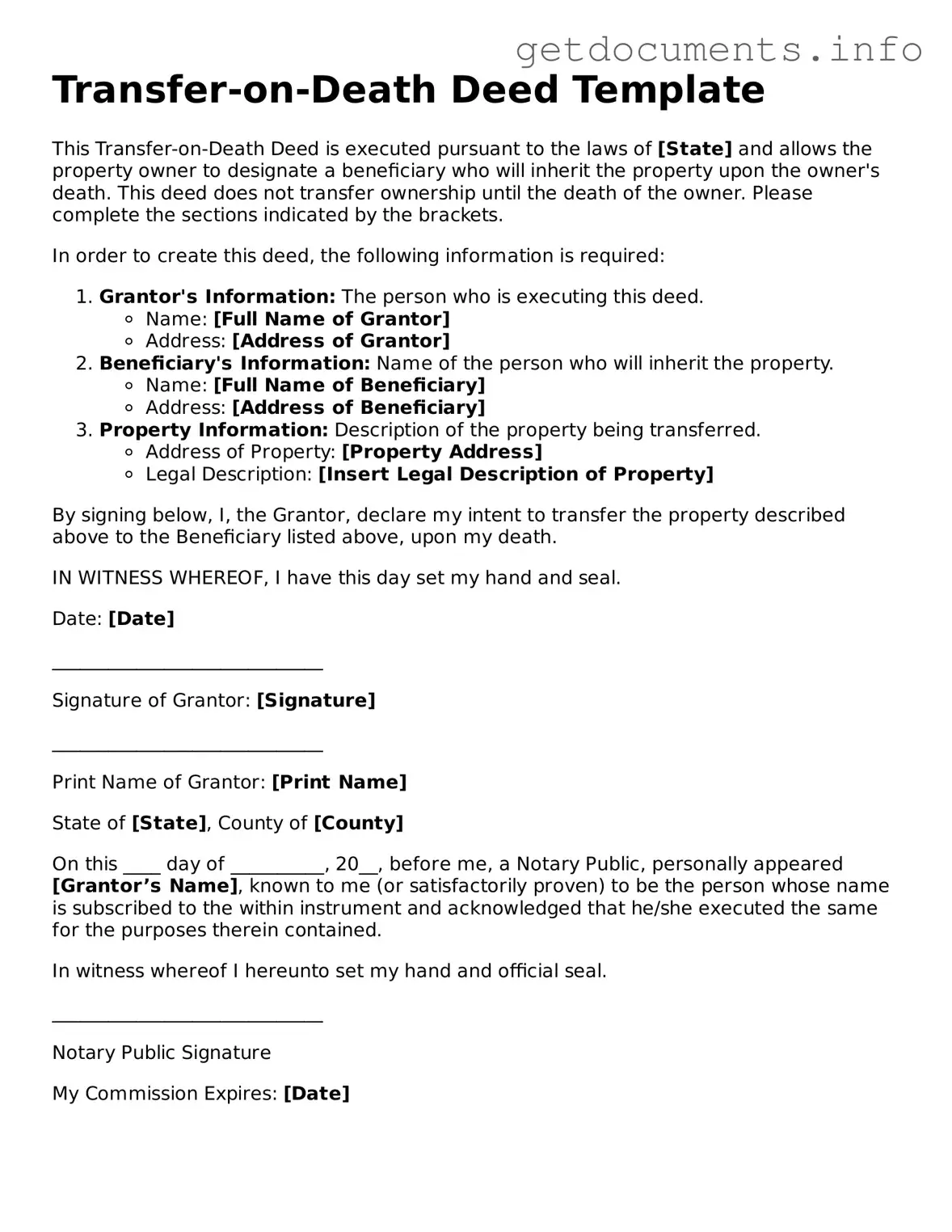The Transfer-on-Death Deed (TOD) form serves as a valuable estate planning tool, allowing property owners to designate beneficiaries who will receive their real estate upon their death, without the need for probate. This straightforward document enables individuals to maintain full control over their property during their lifetime, as it does not transfer ownership until the property owner passes away. By filling out and recording the TOD deed with the appropriate local government office, property owners can ensure a smooth transition of assets, potentially reducing the burden on their loved ones. It is important to note that the form must comply with specific state requirements, including proper execution and recording, to be legally valid. Additionally, property owners can revoke or change the beneficiaries at any time, providing flexibility in their estate planning. Understanding the key aspects of the Transfer-on-Death Deed form can help individuals make informed decisions about their property and beneficiaries, ultimately facilitating a more efficient transfer of assets upon death.
